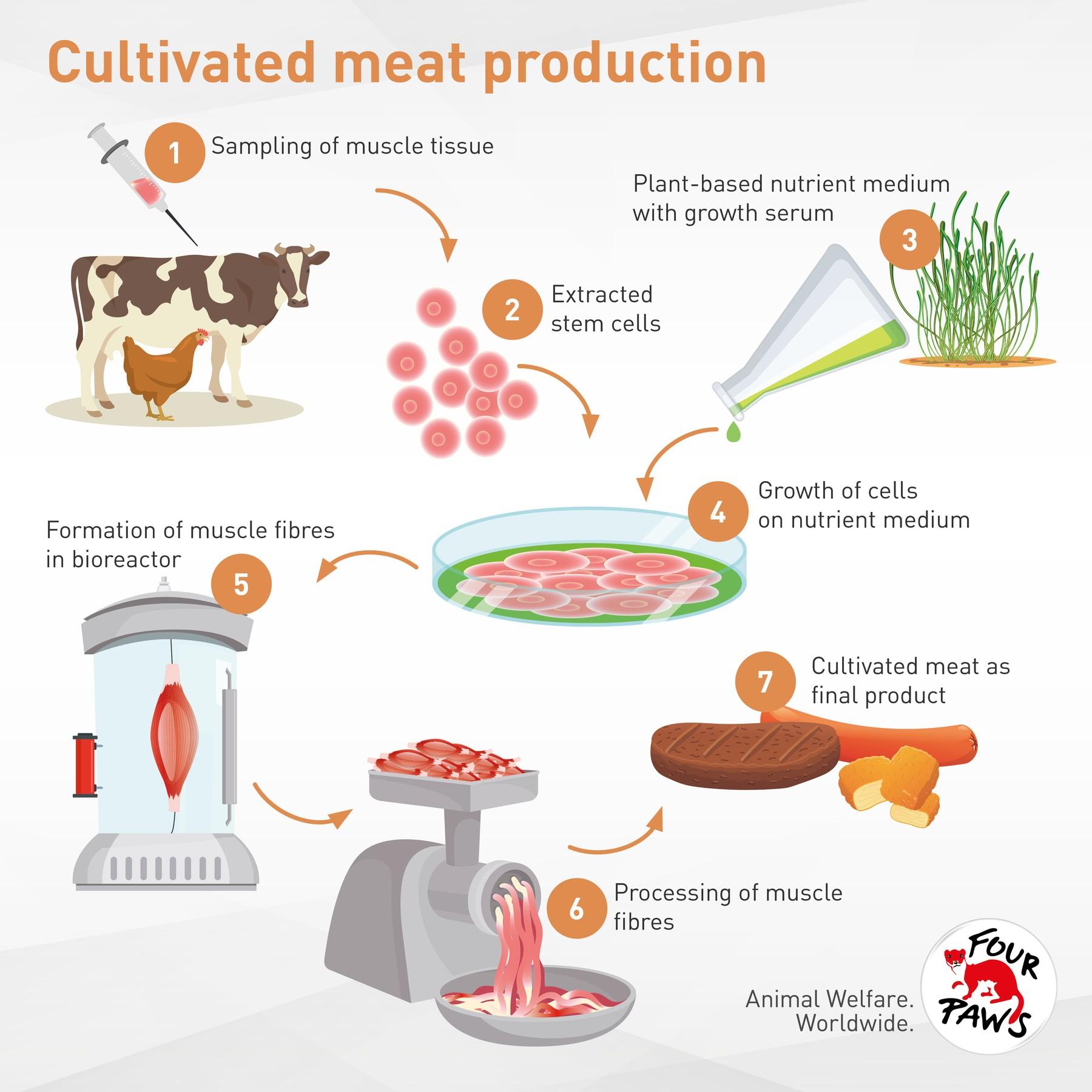
The Clean future of meat
Meat Production Without Killing Animals: What You Need To Know
The current production of animal products subjects billions of thinking, feeling animals to live in extreme confinement. In these situations, these innocent animals experience trauma, mutilations and painful slaughter.
If there was a way to create meat which looked, tasted and cooked just like the "real thing" and came from a live animal who didn’t need to be exposed to cruel keeping systems or slaughter, would the public be open to it?
What Would It Be Named?
There are a handful of start-ups focusing on creating meat that doesn’t involve suffering or death. Cultured, or lab-grown meat (commonly referred to as “clean meat,) is a groundbreaking technology set to revolutionize the global food system.
According to the Good Food Institute, “clean meat” is a more accurate term that describing real meat grown without animal slaughter.
Clean meat is similar to “clean energy” in that it immediately communicates important aspects of the technology—both the environmental benefits and the decrease in food-borne pathogens and drug residues.
It’s no more accurate to say that clean meat is “lab grown” than it is to say that Cheerios and commercial peanut butter are “lab created.” All processed foods start in a food laboratory, of course, but with clean meat, the end result is real meat and no animal suffering.
One such start-up is a Dutch company called Mosa Meat, co-founded by researcher at the University of Maastricht, Dr. Mark Post. Dr. Post, known as the ‘father of Clean meat,’ was the first person to bring clean meat to the public’s attention in London in 2013. His three main motivations for developing Clean meat are:
- Food security
- The environment
- Animal welfare
What Exactly is Clean Meat?
Rather than obtaining meat from animals raised on environmentally destructive factory farms where the animal is treated as a commodity instead of a sentient being, clean meat is produced by taking a small sample of stem cells- usually from lean muscle- through a harmless procedure. It is similar to the way blood is drawn. These cells are then replicated in a culture outside of the animal.
After sufficient cells have grown, they are assembled in groups to form small muscle tissue that are very similar to muscle fibers in a steak. The resulting product is 100% real meat.
It is known that the binding serum used in this technology would be taken from fetal bovines, however Dr. Post states this is no longer necessary. “There are a number of pressuring reasons to eliminate bovine serum. It is inherently unsustainable, and obtaining serum from unborn calves is incompatible with our animal welfare standards. It is also a disease risk.”
Dr. Post's company is working on optimizing the binding agents with plant based serums instead.
Clean meat can be made from any animal that has muscle specific stem cells in muscles. This means all the common animals used for food, such as mammals, birds and fish.
Why is Mosa Meat only focusing on beef?
“We are focusing on beef because cattle are the least efficient links in food production. Their conversion rate is 15% or lower, meaning that you need to feed cattle 1kg of feed to get 150 grams of muscle out of it. Pigs are twice as efficient and chicken is even four times as efficient. Fish is the most efficient. For animal welfare reasons, replacing pigs and chickens with cultured meat variants is a very good idea,” says Dr Post.

Acceptance
With the many implications Clean Meat could solve, there are still technical, financial and organizational challenges.
Mosa Meat and other similar start- ups still need more financing, which is quite difficult to get from public funding.
But Dr. Post is hopeful as more investors are showing interest and there is no fear regarding consumer acceptance of cultured meat. “A number of surveys performed in various European Countries and in the USA, indicate that a large minority ranging from 20-50% are willing to try cultured meat. We are quite confident that when the product is of high quality and not too expensive, the benefits will appeal to the consumer.” With that in mind, Dr. Post also states that we can expect the first introduction of clean meat in restaurants, and specialty stores, in about 3-4 years time. It will take another 2-3 years for super market introduction.
To find out more about Dr. Mark Post and his team behind Mosa Meat, visit: http://mosameat.eu/
